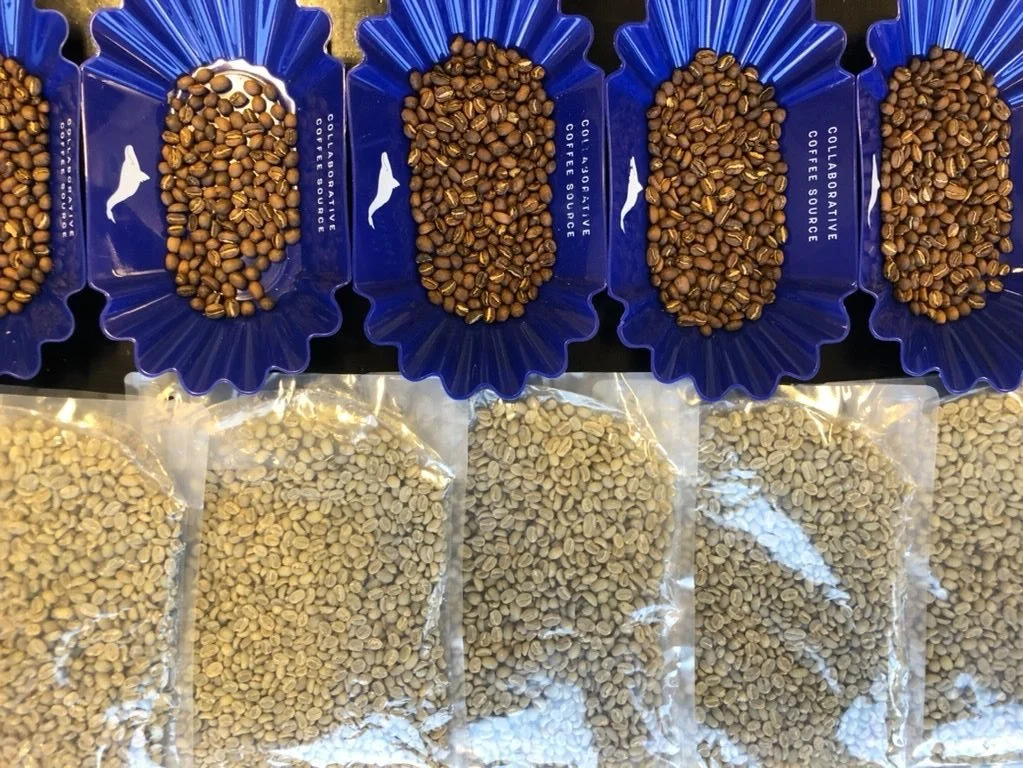We love working with coffee professionals who are competing in local and international competitions. These events are a great showcase for our producing partners, and the skills of talented and dedicated baristas, brewers and roasters.
To stand out in these competitions, you need a distinctive coffee with a great story, and we have some limited edition coffees, available in Europe, which can give you the edge you need. Just ask Tom Kuyken, Norwegian Brewers Cup champion 2018, and Agnieszka Rojewska, 2018 Polish Barista Champion, who both won with distinctive and fascinating coffees from our partners in Cundinamarca, Colombia, La Palma y El Tucán.
Veronika Galova Vesela is our sales rep in charge of competition coffees. Check out the full selection in our new CCS Competition Coffees store on Cropster Hub, and Veronika can help you find that dream coffee for your upcoming competition.
WHAT YOU NEED TO KNOW
Green coffee buying can be somewhat confusing if you haven’t done it before, and it can be expensive to buy a single bag. When searching for that special coffee for your next competition, here are a few things you should know in advance.
IN EUROPE we can only sell to companies, not individuals
This is for tax reasons. When a coffee arrives in our warehouse in Antwerp or Hamburg, tax is yet to be paid. The amount of tax charged depends on which EU country the coffee is sold to. In order to calculate the tax, and which country receives it, we need an EORI number and a Customs Clearance Contract, which only companies can apply for. If you are competing on behalf of a café or roastery, they can purchase the coffee for you.
There are costs beyond the cost of coffee
In addition to the price of the coffee, there are some extra costs you need to consider.
1. Customs Clearance
In Europe, for orders of less than a full pallet (10 bags), there is a Customs Clearance Fee of $120 per order. This fee is waived if you order a full pallet, so if you work with a roastery, you might consider buying a full pallet. You can buy different coffees to fill a pallet.
2. Palletization
Shipping companies like TNT and DHL will not collect or deliver individual bags of coffee, they must be put on a pallet. Palletization, strapping and wrapping costs $38 USD in Europe, and $25 USD in the US. That’s a flat fee for an entire pallet, whether it contains one bag or ten.
A Step by Step Guide to Buying Competition Coffee
1. Choose your coffee
We have selected some coffees that are delicious, unique and fascinating, and put them all in a special store on Cropster Hub. Browse our selection and order a sample.
2. Compile all the necessary documentation
In Europe there are two essential documents you will need.
EORI Number
If the coffee will be shipped to a country in Europe, we need an EORI for tax purposes or our warehouses can’t release the coffee. Generally it’s not hard to get one, just ask your national tax authority. Customers in Switzerland, Iceland and Norway are exempt from EORI.
Customs Clearance Certificate
Customers in Europe must complete and sign a Customs Clearance Certificate. You can download it here.
3. Calculate the total cost
If you are in Europe and planning to buy just one bag, calculate the full cost of the bag, plus $120 for Customs Clearance and $38 for palletization.
4. Contact our Sales team
Email Veronika to discuss your vision for your competition. Make sure to let her know the following information:
Company name.
Billing address.
Your delivery address including phone number and delivery contact (this can be different from the billing address).
Your EORI number. (Remember, Switzerland, Iceland and Norway are exempt.)
- A signed version of our Customs Clearance Contract.
And don’t forget to let us know when and where you’re competing. We will be your social media cheer squad!
Good luck.






